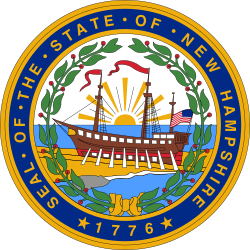| |||||||||||||||||
| |||||||||||||||||
Benson: 40–50% 50–60% 60–70% 70–80% 80–90% >90% Fernald: 40–50% 50–60% 60–70% >90% | |||||||||||||||||
| |||||||||||||||||
| Elections in New Hampshire |
|---|
 |
The 2002 New Hampshire gubernatorial election was held on November 5, 2002. Three-term incumbent Democratic governor Jeanne Shaheen opted to unsuccessfully run for the United States Senate rather than seek a fourth term as governor. Republican Craig Benson, a self-funded businessman, defeated Democrat Mark Fernald, a state senator, in the general election after both won contested primary elections.
Contents
- Democratic primary
- Candidates
- Results
- Republican primary
- Candidates 2
- Results 2
- General election
- Predictions
- Results 3
- See also
- References
- External links
This was the only time a Republican was elected governor between 1994 and 2016.



